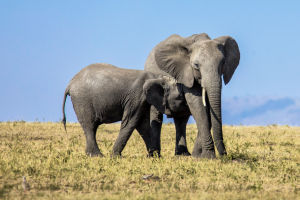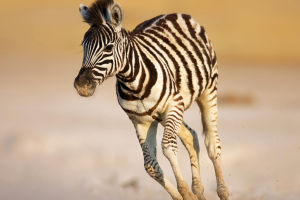Agile And Adorable
Rabbits are a common mammal that can be found all over the world, and they are adored by many people for their lively and adorable appearance.
They belong to the order Lagomorpha, which includes many different species, with the most well-known being domestic rabbits, wild rabbits, and some endangered species.
Rabbits are relatively small animals, known for their round, compact bodies and long ears, which are some of their most distinctive features. Their hind legs are highly developed, allowing them to jump quickly, which plays a crucial role in their ability to escape predators in the wild.
Rabbits primarily feed on plants and have a diet consisting of grasses, vegetables, and tender leaves. Due to their unique digestive system, rabbits have developed a behavior called "coprophagy," which allows them to extract more nutrients from their food.
This behavior involves re-consuming partially digested feces, ensuring that they can absorb as much energy and nutrients as possible. While this may seem unusual, it is a vital part of their digestive process, as it helps them break down fibrous plant material more effectively.
Rabbits have excellent vision and hearing, which are crucial for their survival in the wild. Their eyes are positioned high on their heads, providing them with a nearly 360-degree field of view, allowing them to detect potential threats from all directions.
Their long ears are not just a distinctive feature but serve a practical purpose as well. They can detect subtle changes in sound, helping rabbits sense danger and react quickly.
In the wild, rabbits face threats from a variety of predators, including foxes, eagles, and snakes, making their sharp senses and alertness essential for their survival.
Rabbits are also known for their impressive reproductive capabilities, which have become one of their key survival strategies. Female rabbits, also known as does, can give birth to multiple offspring, called kits, in a single litter.
The gestation period for rabbits is relatively short, typically lasting around a month. This rapid reproductive cycle means that wild rabbit populations can grow quickly in a relatively short time.
However, in some areas, this prolific breeding can lead to overpopulation, which may disrupt local ecosystems and lead to imbalances in the environment.
The relationship between rabbits and humans dates back thousands of years. In ancient times, rabbits were not only valued as a source of food but also revered as symbols of fertility, prosperity, and vitality due to their high reproductive rate. In some cultures, rabbits were associated with good luck, rebirth, and resurrection.
In more recent times, rabbits have become popular pets, known for their gentle and affectionate nature. They are also bred for their fur and used in scientific research, although the use of rabbits in experiments has raised ethical concerns. As a result, there has been growing debate about the appropriate and humane use of rabbits in research.
Rabbits are adaptable animals and can live in a variety of habitats, including forests, grasslands, and deserts. Domestic rabbits are commonly found in households as pets or bon reeding farms, while wild rabbits prefer open environments where they can dig burrows to protect themselves from predators.
Rabbit burrows, also known as warrens, are often complex and cleverly designed, with multiple exits to allow for a quick escape if a predator approaches. These burrows offer protection and serve as a safe place for raising young.
Although rabbits are generally known for their calm and gentle temperament, they can exhibit strong survival instincts when threatened. One of the ways they communicate danger to other rabbits is by thumping their hind legs on the ground, creating a vibration that alerts their companions to potential threats.
Their powerful hind leg muscles allow them to make quick, agile jumps to flee from predators when necessary. This combination of alertness and physical agility helps rabbits evade predators and survive in the wild.
As pets, rabbits are favored by many families due to their quiet and docile nature. They do not require a large amount of space and are relatively easy to care for, making them ideal pets for households with limited room. Rabbits need a clean living environment, a balanced diet, and access to fresh water to stay healthy.
However, they do have specific needs that must be met. For example, a rabbit’s teeth grow continuously throughout its life, so they need to chew on hard objects, such as wood or specialized rabbit chew toys, to wear down their teeth. If a rabbit's teeth become too long, it can lead to health problems, such as difficulty eating or dental pain.
Rabbits are much more than just cute and cuddly animals. Their unique biological traits, such as their digestive process and reproductive capacity, play a vital role in their survival in the wild.
Meanwhile, their relationship with humans has evolved over millennia, from being a source of food to becoming beloved pets and symbols of prosperity. Whether in nature or homes, rabbits continue to captivate and charm those who encounter them, making them a truly remarkable species in the animal kingdom.


